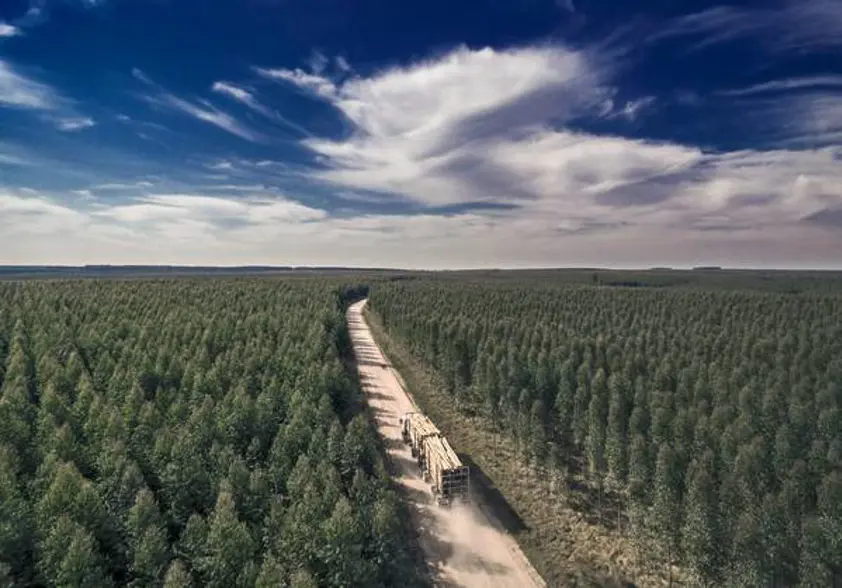Global demand for wood and wood-based products is steadily outpacing what is currently being produced.
“Already today the forest-based industry is serving several different value chains. This is a major advantage for the industry because it is not so exposed to one sector or another,” pointed out João Cordeiro, Senior Principal of Pöyry Management Consulting, while addressing the audience at CAETS.
“We are exposed to many of these sectors from textiles to plain wooden planks,” he added. “The new industry is going to have completely new value chains, for example composite materials for aviation.”
What Cordeiro envisions as the future of the industry matched spot-on the theme of the conference. The tagline for the event, organised by the International Council of Academies of Engineering and Technological Sciences (CAETS) with the National Academy of Engineering of Uruguay, was “Engineering a better world: Sustainable development of agricultural and forestry systems”.
How much wood is needed?
Pöyry predicts that by 2030 the need for timber, wood panels, pulp and fibre-based products, and wood-based biochemicals will require 2.5 billion cubic metres of wood, creating EUR 770 billion of value.
According to Cordeiro, in order to meet global demand, the industry must find a way to produce 700 million cubic metres more wood than is currently being used.
Cordeiro pointed out that most global megatrends favour the forest industry. Of the four major wood-based product sectors, only the graphic paper products sector is decreasing due to the push toward digitalisation of media.
However, other parts of paper industry, such as packaging, are growing across the world, partially due to the rise of e-commerce and the growing need to find plastic substitutes. Beyond paper, other pulp products such as tissue, diapers, wood products and wood-based chemicals and materials are all also growing.
Much of this growth is spurred by increasing demand in China and Southeast Asia, both of which are experiencing rapid urbanization, population growth and improved hygiene standards. However, biomass and biomaterial demand from wood-based chemicals is also growing across the developed world.
“We can only meet this growing demand with more sustainable plantations,” Cordeiro said.
“It is basic economics,” Cordeiro said. “It makes a lot of sense to intensively produce wood in certain areas. When you do this, you are able to preserve the use of natural forests.”
The value of plantations
According to a study from CPA Ferrere, a consultancy company, forest plantations in Uruguay generate more value and employment than alternative land use. The firm found that forestry plantations generated nearly double the value of exports per hectare, double the amount of employment per 1,000 hectares, and more than triple the amount of tax revenue the government took in per hectare, compared with other activities.
However, to ensure even more efficient use of forest plantations, they can be integrated to other activities, such as eucalyptus honey production during the blooming season.
Plantations also make sense for a variety of other reasons. Trees bind carbon and thus act as carbon sinks throughout their growth. Plantations help to protect the environment by preserving natural forests and preventing erosion.
“Plantation forests are one of the secrets to global sustainability,” Rosario Pou Ferrari, a leading member of Uruguay’s National Academy of Engineers and author of the book Forestación en Uruguay, told conference attendees. “Plantation forests serve the need for conserving forests.”
For example, in the western provinces of Uruguay in which two large pulp mills are located, plantation forests sit adjacent to natural ones. Uruguay does not have much natural forests, so well-managed plantations have protected the ones that do exist.
They do so by preventing soil erosion and returning nutrients to the soil once the trees have been stripped of their leaves, bark and branches. In China, some plantations have been established with the sole purpose of protecting fragile landscapes.
More plantations in future
Currently the fastest growing market for all types of wood-based products is Asia.
“It would make a lot of sense to have more plantations in Asia,” Cordeiro said. “But you are limited by land availability and this is an important point. There is a lot of land, but most of it is used for food production. Many of the plantations in China, for example, are confined to the hilly areas where it is very difficult to have agriculture.
“Plantations are only successful when they are not competing with agriculture,” he added. “It doesn't make sense to use very fertile land for growing trees since trees can grow in less favourable environments.”
“Here in South America we are fortunate to have a lot of land which is suitable for plantations,” Cordeiro said. “It's mainly pasture land with very limited alternative land use, so developing plantations is a very intelligent way of using the land.”
Text: Daniel Dawson

